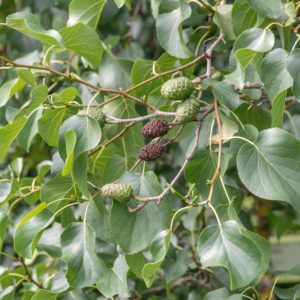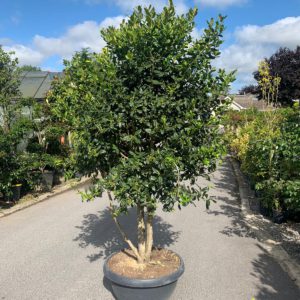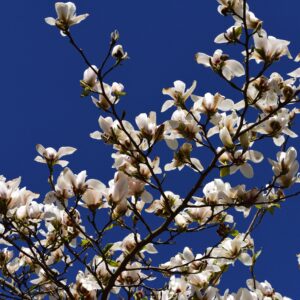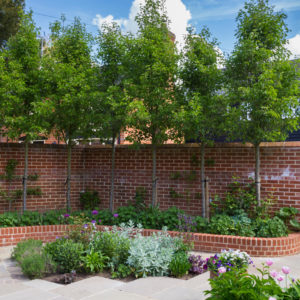Betula Jacquemontii Multi-Stemmed
Price range: €300.00 through €750.00
Frequently Bought Together
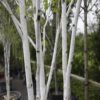


Description
Quick Facts
- Common Name: Himalayan Birch Multistem, Jacquemont’s Birch Multistem, White-Barked Himalayan Birch Multistem
- Botanical Name: Betula utilis var. jacquemontii (multistem form)
- Plant Type: Deciduous tree (multistem)
- Mature Height: 10-15m
- Mature Spread: 6-9m
- Flowering Period: April
- Flower Colour: Yellow-brown male catkins, green female catkins
- Foliage: Ovate to triangular leaves, dark green turning golden-yellow in autumn
- Hardiness: RHS H6 (hardy)
- Soil Requirements: Moist, well-drained, tolerates most soil types
- Aspect: Full sun to partial shade
- Maintenance: Low
Description
Experience the sculptural magnificence of Betula utilis var. jacquemontii in stunning multistem form, where multiple brilliant white trunks rise from a single base to create breathtaking architectural drama, exceptional year-round interest, and living sculpture that transforms Irish gardens with its luminous presence. This outstanding multistem specimen offers amplified visual impact—multiple dazzling white stems creating a spectacular cluster of luminous trunks that glow in winter sun and moonlight, enhanced architectural presence with greater bark surface area to appreciate, more compact and manageable size than single-stem specimens whilst maintaining dramatic impact, elegant branching that creates beautiful layered canopy and graceful structure, and the most brilliant white bark of any birch displayed across multiple stems, making this one of the most sought-after and visually striking architectural trees for creating instant focal points and sculptural statements in contemporary and traditional gardens alike.
Throughout spring and summer, this captivating multistem tree displays its characteristic ovate to triangular leaves measuring 5-10cm long with serrated edges across multiple stems, creating a light, airy layered canopy in rich dark green that provides beautiful contrast to the cluster of brilliant white trunks. The multiple stems create enhanced textural interest and architectural presence, with elegant branching creating graceful structure from multiple points. In early spring, pendulous yellow-brown male catkins measuring 5-10cm appear alongside shorter green female catkins across all stems, providing early interest. But the true glory is the spectacular cluster of brilliant white trunks—three to five (or more) dazzling white stems rising from a single base, creating a sculptural grove effect and maximising the visual impact of the purest white bark. The smooth, luminous stems glow against dark evergreens and provide spectacular winter interest, with the multistem form creating enhanced drama and architectural presence that single-stem specimens simply cannot match.
Native to the Himalayas from Afghanistan to China, this remarkable tree is named after French botanist Victor Jacquemont. The multistem form is carefully cultivated in nurseries by selecting young trees with multiple leaders or by coppicing and training to create the desired sculptural effect. Hardy and adaptable, Himalayan Birch thrives in Irish conditions, with the multistem form offering enhanced stability in exposed sites due to the multiple trunks and lower centre of gravity. The brilliant white bark develops quickly—often showing excellent white colour within 2-3 years—and remains consistently bright and clean across all stems.
Create stunning compositions by planting as spectacular sculptural specimens in lawns, courtyards, or prominent positions where the cluster of white trunks can be appreciated from all angles—particularly stunning when backlit by low winter sun or uplighting at night. Magnificent as focal points in contemporary gardens, formal landscapes, or naturalistic settings. Exceptional for smaller gardens where the more compact multistem form provides dramatic impact without overwhelming the space. Works beautifully framing entrances, beside water features, or in gravel gardens. Plant where visible from the house to enjoy the spectacular bark cluster year-round. The multistem form creates instant maturity and architectural presence.
Caragh Garden Notebook
Planting: Space multistem specimens 6-8m apart for groupings, or allow 8-10m for specimen placement—multistem forms have a slightly smaller spread than single-stem specimens. Plant bare-root trees from November to March, or container-grown specimens year-round (autumn or early spring is ideal). Dig holes twice the width of the root ball and incorporate organic matter. Plant at the same depth as the nursery soil mark, ensuring all stems are properly positioned. Stake if needed for the first 1-2 years, though multistem forms are generally more stable. Water thoroughly and mulch around the base, keeping mulch away from the stems.
Soil Preparation: Thrives in moist, well-drained soil with pH 5.0-7.5. Tolerates a wide range of soil types including moderately acidic, neutral, and slightly alkaline soils. Prefers moisture-retentive, fertile conditions enriched with organic matter. Dislikes very dry or waterlogged sites. More tolerant of slightly alkaline conditions than our native Silver Birch. Best bark colour and overall growth occur in full sun with consistent moisture and good drainage—full sun is essential for maximum bark brightness across all stems.
Container Growing: Young multistem specimens can be grown temporarily in very large containers (minimum 100cm diameter) for 2-3 years, creating stunning architectural features for patios and terraces. Use soil-based compost and water regularly. However, for best long-term health and to achieve full size potential and characteristic bark development across all stems, plant out into the ground. Multistem forms are particularly effective as temporary container specimens for events or seasonal displays before permanent planting.
Seasonal Care: Requires minimal maintenance—the multistem form is carefully trained in the nursery and requires little intervention. Remove only dead or damaged branches in late summer to early autumn when sap flow is reduced—avoid winter and spring pruning as birches bleed sap heavily. Remove any low branches if desired to showcase the spectacular cluster of white trunks. Do not remove any of the main stems unless absolutely necessary, as this destroys the sculptural multistem effect. Apply no fertiliser—lean conditions produce the best growth and bark colour. Mulch lightly to suppress weeds. Water during dry spells, especially in the first 3-5 years until established.
Propagation: Multistem forms are created through specialist nursery techniques including selecting young trees with multiple leaders, coppicing, or training multiple stems from a single rootstock. Cannot be easily replicated by home gardeners. Single-stem specimens can be coppiced when young to encourage multiple stems, but professional nursery-grown multistem specimens offer guaranteed quality, balanced stem arrangement, and immediate architectural impact. Most gardeners prefer to purchase established multistem specimens for instant sculptural effect.
This multistem beauty is absolutely stunning—that cluster of brilliant white trunks creates such dramatic sculptural impact! Multiple luminous stems rising from a single base amplify the visual drama and provide enhanced bark surface area to appreciate. More compact than single-stem specimens but with even greater architectural presence. Perfect for creating instant focal points in your garden—those white trunks backlit by winter sun or uplighting at night are simply magical. Living sculpture at its finest!


